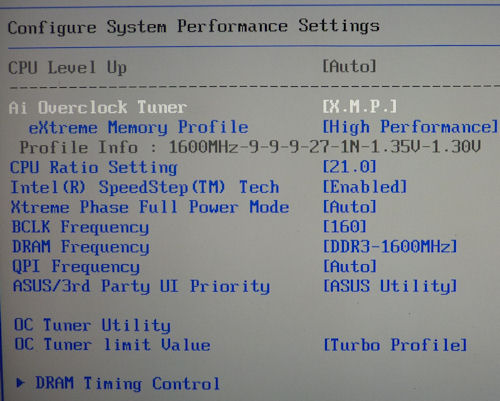How we test
| CPU | Intel Core i5 661 | AMD Phenom II X4 965 BE | |
|---|---|---|---|
| Frequency | 3.36GHz (21x 160MHz) | 3.40GHz (17x 200MHz) | |
| Cache | 0.5MB L2, 4MB L3 | 2MB L2, 6MB L3 | |
| Form factor | LGA1156 | AM3 | |
| Motherboard | ASUS
P7H57D-V EVO |
Gigabyte
890GPA-3UDH |
|
| BIOS revision | 0401 |
F4 |
|
| Mainboard software | Intel Inf 9.1.1.1025 | AHCI
1.2.0.164 NEC USB3 1.0.18.0 |
|
| Memory | 4GB
(2 x 2GB) Kingston DDR3-1,600 CL9 LoVo 4GB (2 x 2GB) Kingston DDR3-1,600 CL9 1.65V |
||
| Memory timings and speed | 9-9-9-24-2T @
DDR3-1,600 @ 1.65V/1.35V 9-9-9-24-2T @ DDR3-1,280/1,333 @ 1.50V |
||
| Graphics card | Sapphire Radeon HD 5770 1,024MB | ||
| Discrete graphics driver | Catalyst 10.3 | ||
| Disk drive | Corsair P256 SSD | ||
| Operating system | Windows 7 Ultimate 64-bit | ||
| PSU | Corsair HX850W | ||
Testing notes
We're looking at the performance of the modules when compared against a similar set of Kingston memory that has a native 1.65V rating at 1,600MHz.Two platforms are taken into account. The first is an Intel H57-based setup with a Core i5 661 chip in the socket. The dual-core, quad-threaded CPU ships with integrated graphics, but we're using a discrete Radeon HD 5770, mimicking a mid-range system.
The motherboard doesn't natively support DDR3-1,600 memory at the CPU's default speed, Inputting XMP timings increases the BCLK to 160MHz and reduces the multiplier to 21x, resulting in a fixed, non-Turbo-enabled speed of 3.36GHz.

Note the profile information and, in particular, voltage. Two sets of Kingston modules are run at this speed, differentiated by operating voltage - 1.35V vs. 1.65V. We also dropped the DRAM multiplier to 8x, resulting in a 1,280MHz speed. This time, only one pack was run with a 1.50V rating/
Kingston angles the LoVo modules at Intel LGA1156 boards, but there is no reason why they cannot be used on an AMD setup. To that end, we ran the two sets on a Gigabyte 890GX board with a Phenom II X4 965 BE in situ. Direct support for DDR3-1,600 and DDR3-1,333 makes inputting desired frequencies simpler, albeit without one-touch XMP support.
We test the system-wide power-draw when the platforms are idling, running Prime95 v25.9's 'blend' test, and the 1,680x1,050 4xAA benchmark for Far Cry 2. Numbers are taken from a watt-meter plugged into the mains.









